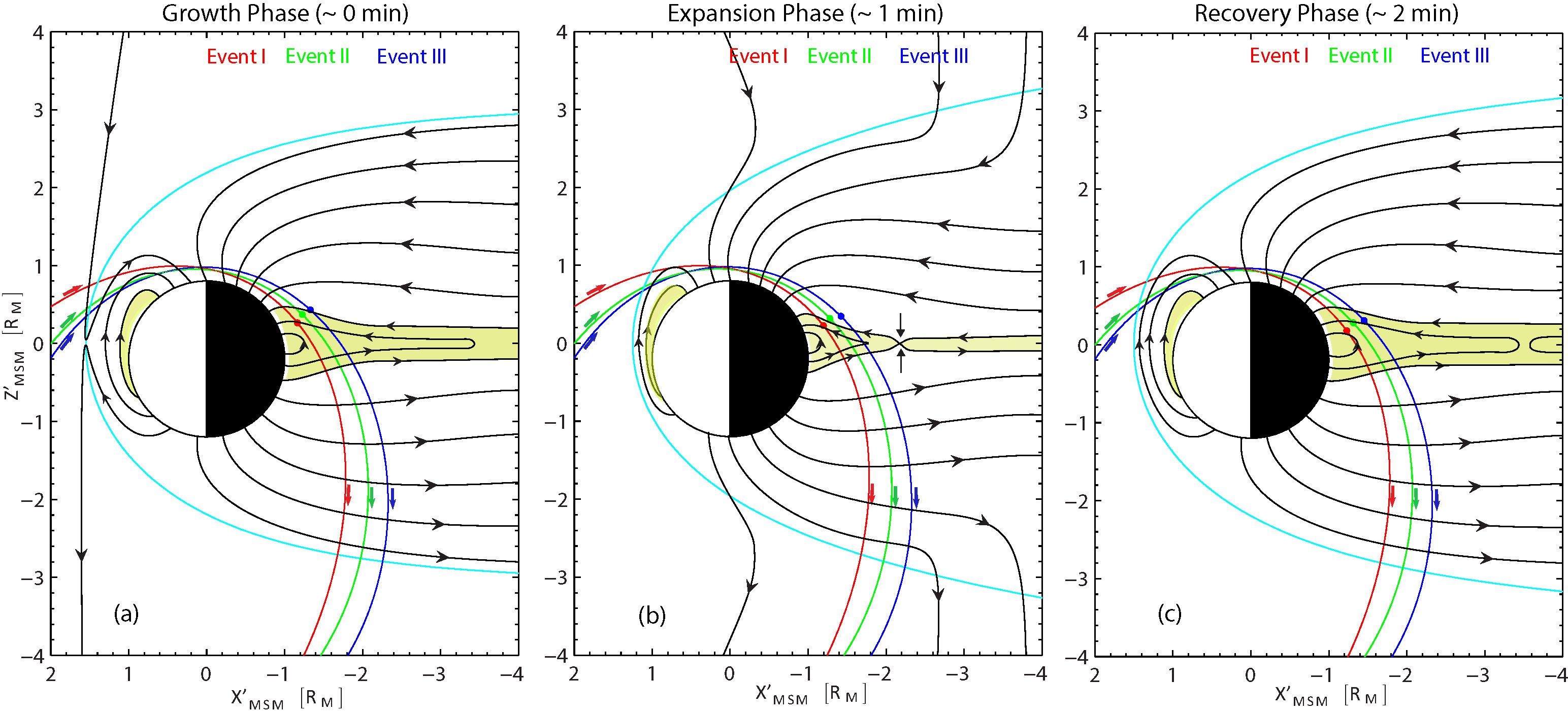Magnetospheric substorm activity in Mercury's near magnetotail Wei-Jie Sun, James Slavin, Suiyan Fu, Jim Raines, Qiu-Gang Zong, Suzanne Imber, Quanqi Shi, Zhonghua Yao, Gangkai Poh, Daniel Gershman, Zuyin Pu, Torbjorn Sundberg, Brian Anderson, Haja Korth, and Daniel Baker
The MErcury Surface, Space ENvironment, GEochemistry, and Ranging (MESSENGER) magnetic field and plasma measurements taken during crossings of Mercury’s magnetotail from 2011 to 2014 have been examined for evidences of substorms. A total of 26 events were found during which an Earth-like growth phase was followed by clear near-tail expansion phase signatures. During the growth phase, the tail lobe loads with magnetic flux while the plasma sheet thins due to the increased lobe magnetic pressure. MESSENGER is often initially in the plasma sheet and then moves into the lobe during the growth phases. The averaged time scale of the magnetic flux loading is ~ 1 min. The dipolarization that marks the initiation of the substorm expansion phase is only a few seconds in duration. The spacecraft then abruptly enters the plasma sheet due to the plasma sheet expansion as reconnection-driven flow from the near-Mercury neutral line encounters the stronger magnetic fields closer to the planet, which is identified as the substorm expansion phase lasting ~ 1 min. The duration of the substorm observed in this paper is consistent with previous observations of Mercury’s Dungey cycle. The estimation of dissipated magnetic energy during Mercury’s substorm (~ 1012 J) is ~ 1 000 times smaller than that of Earth (~ 1015 J). And the total field-aligned current (~ 100 kA) is two order smaller than the Earth (~ 1 MA).


The data used in this study were available from the Planetary Data System (PDS):http://pds.jpl.nasa.gov. The MESSENGER project is supported by the NASA Discovery Program under contracts NASW-00002 to the Carnegie Institution of Washington and NAS5-97271 to the Johns Hopkins University Applied Physics Laboratory. Wei-Jie Sun is supported by the State Scholarship Fund of Chinese Scholarship Council. This work is supported by the National Nature Science Foundation of China (grants 41474139, 41322031, and 41421003) and Major Project of Chinese National Programs for Fundamental Research and Development (2012CB825603). This work is also supported by the NASA Heliophysics Supporting Research Program under grant NNX15AJ68G.
Sun, W.-J., J. A. Slavin, S. Fu, J. M. Raines, Q.-G. Zong, S. M. Imber, Q. Shi, Z. Yao, G. Poh, D. J. Gershman, Z. Pu, T. Sundberg, B. J. Anderson, H. Korth, and D. N. Baker (2015), MESSENGER observations of magnetospheric substorm activity in Mercury’s near magnetotail. Geophys. Res. Lett., 42, 3692–3699. doi: 10.1002/2015GL064052.
